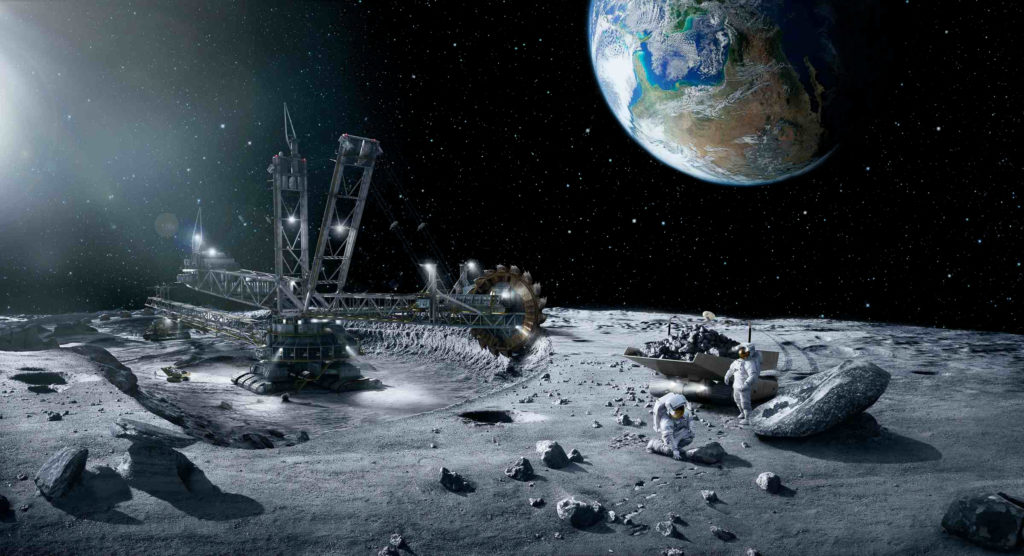As Earth’s natural resources face increasing pressure from growing global demand and environmental limitations, a bold new solution is emerging—space mining. This once-fictional concept is rapidly transforming into a viable industry, with governments and private enterprises investing in technologies to extract valuable minerals from the Moon, asteroids, and beyond.

What Is Space Mining?
Space mining, also known as extraterrestrial resource extraction, involves harvesting materials from celestial bodies such as asteroids, the Moon, and even Mars. These materials include water, metals like platinum and gold, rare earth elements, and volatiles like hydrogen and helium. The goal is to support both in-space operations (fuel, life support, construction materials) and bring valuable resources back to Earth.
Why Space Mining Matters
-
Resource Scarcity on Earth: Many elements critical to modern technology—such as lithium, cobalt, and rare earth elements—are becoming harder to obtain sustainably. Space offers potentially unlimited reserves of these materials.
-
Economic Opportunity: According to some estimates, the space mining industry could be worth trillions of dollars in the coming decades. One small asteroid could contain more platinum than has ever been mined on Earth.
-
Sustainable Space Exploration: Water extracted from the Moon or asteroids could be converted into rocket fuel (hydrogen and oxygen), enabling more efficient deep space missions.
-
Strategic Advantage: Nations that lead in space resource utilization may dominate future space logistics, trade, and even diplomacy.
Leading Players in Space Mining
Government Agencies
-
NASA: Under its Artemis program, NASA plans to return humans to the Moon and use its resources to sustain long-term lunar missions. The agency is developing technologies to extract regolith, water ice, and metals.
-
ESA (European Space Agency): ESA is exploring Moon mining and has partnered with private companies to study extracting oxygen and metals from lunar soil.
Private Sector Innovators
-
SpaceX: While not directly a mining company, SpaceX’s Starship is critical to transporting mining equipment and materials off Earth.
-
AstroForge: A U.S.-based startup developing missions to mine near-Earth asteroids.
-
Planetary Resources and Deep Space Industries: Early pioneers in asteroid mining concepts, though both have since been absorbed into larger firms.
International Efforts
-
China and India have active lunar exploration programs and long-term plans for lunar base construction, which could integrate in-situ resource utilization (ISRU).
-
Luxembourg has established itself as a global hub for space resource policy, offering legal and financial support for space mining ventures.
Key Technologies Powering Space Mining
-
Prospecting Satellites: Robotic spacecraft identify and analyze celestial bodies for mineral composition.
-
Autonomous Mining Robots: AI-driven systems capable of operating in harsh, low-gravity environments.
-
3D Printing and ISRU: In-situ resource utilization enables astronauts to manufacture tools and structures using local materials.
-
Cryogenic Processing Systems: For extracting and storing water or volatiles in space.
Legal and Ethical Challenges
-
Ownership Rights: The 1967 Outer Space Treaty prohibits nations from claiming sovereignty over celestial bodies, but it’s unclear how private companies can claim ownership of mined resources.
-
Environmental Concerns: Space mining could potentially contaminate pristine extraterrestrial environments or create orbital debris.
-
Geopolitical Tensions: As countries stake claims or initiate operations, the risk of conflict over space resources may rise without clear international governance.
Looking Ahead: The Road to Commercial Viability
The first commercial space mining missions are expected within the next decade, initially targeting asteroids rich in platinum-group metals and lunar water ice. Early goals will focus on supporting space missions, but long-term visions include returning metals to Earth and building space-based infrastructure.
Governments are increasingly supporting these efforts through grants, regulatory frameworks, and international partnerships. The U.S. and allies under the Artemis Accords have begun laying the legal groundwork for future resource use.

